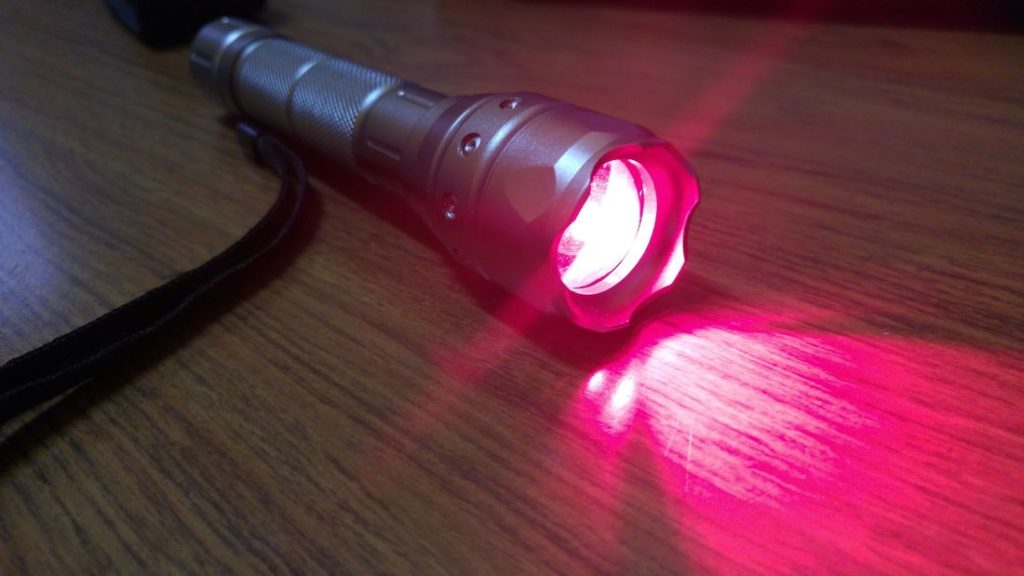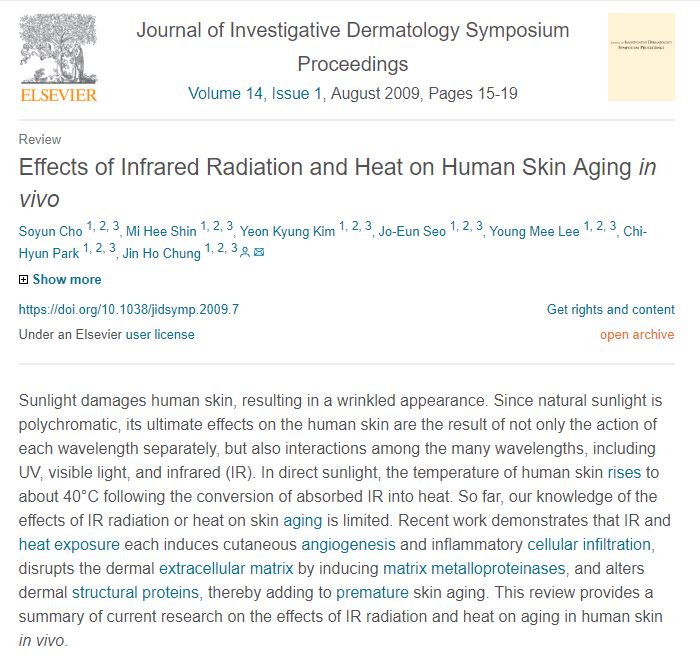Near infrared, like far infrared, has many health benefits – but due to it’s more energetic wavelength, it is harsher on the skin.
Near infrared is close to the spectrum of light you see when a toaster or oven glows orange.
Summary: Studies have shown that near infrared can contribute to aging of the skin and increase in the risk of skin cancer. Another study showed that far infrared can actually protect the skin by stimulating collagen production.
- Because water absorbs far infrared, you can heat the body faster. This is why it works so good for hyperthermia treatments. A man posted the test he did on Reddit which proves this. (His apple watch showed his body temperature rising faster when using the Relax sauna.)
- Studies show that near infrared causes the formation of free radicals in the skin, which depletes the body of antioxidants, makes the skin form scar tissue and ages it faster.
- Much of the research they use is based on near infrared lasers or LED lights and does not apply to their sauna.
In short, near infrared is harsher than far infrared. Near and Far infrared are different and have different applications, apples and oranges. When looking at near infrared vs. far infrared saunas, it is not really a which is superior question, but rather what is better for the results a person is wanting to achieve. If someone wants to raise their temperature, sweat and detox, research shows that far infrared is the best choice.
What is the difference between near and far infrared?
Near infrared is closer to the ultraviolet spectrum which causes sunburn than far infrared is. Because it is close on the light spectrum to far infrared it has many similar benefits but it is harsher and therefore has some potential risks.





